To Index Home Page
To View The Images:
Click
IMAGES ONLY
Then use your mouse
with the slider on the right of this frame
to view the 40 + images.
And See All The Images:
Click
FULL TUTORIAL

Ancient Middle East

The Sumerian Civilization (3000 to 2340 BC.) Some cities and sites from that period.

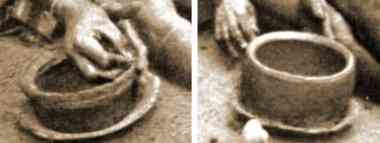
Building the pot on a round bottomed dish or platter makes it much easier to pull/turn a pot around with the fingers as you press and smooth the coils.

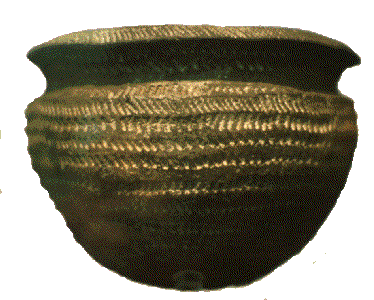
A small coiled grave bowl from prehistoric Britain. The rounded bottom suggests it was probably made in a shallow dish or bowl - for ease of turning and smoothing.

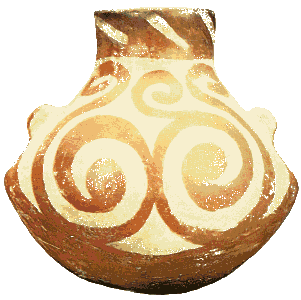
This small red and cream slip-decorated pot from Hacilar in western Turkey c.5200 BC.was probably made in a shallow dish or bowl - for ease of turning and smoothing.

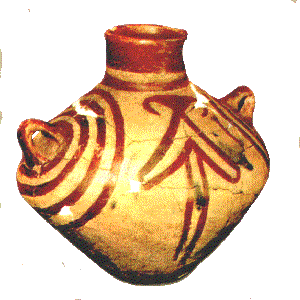
A slip decorated coiled pot from Hacilar in western Turkey c.5200BC. Probably coiled in a bowl with a small flat bottom. The small base would make the constant turning fairly easy and give support as the coiled pot grew in size. When dry the pot would be hard enough to stand alone without collapsing.

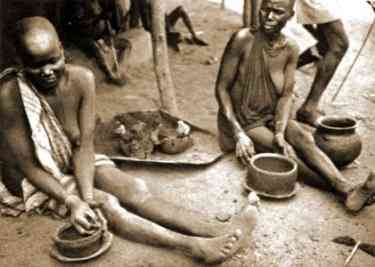
Coiling pots on shallow dishes or bowls.

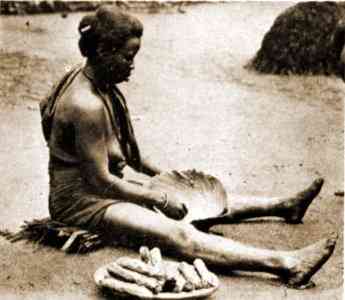
Making a pancake-like base to start a coiled pot. Short sausage-like coils in the foreground dish.

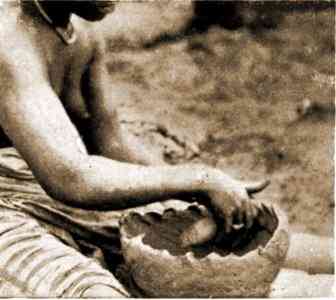
Smoothing the top coil upwards to raise the pot wall.

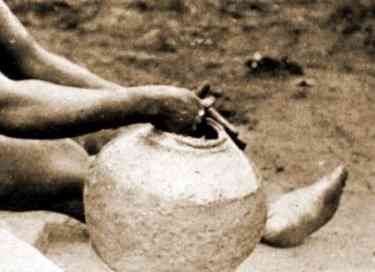
Adding small coils to the tapering neck.

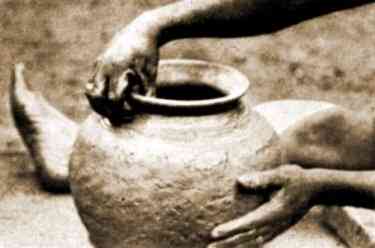
Pulling the pot round with the left hand whilst thinning and opening to make a rim with the right hand.

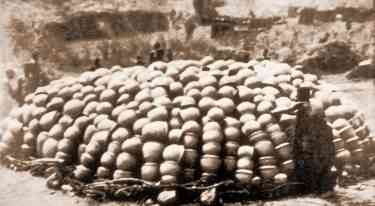
Sun drying a large pile of coiled pots.

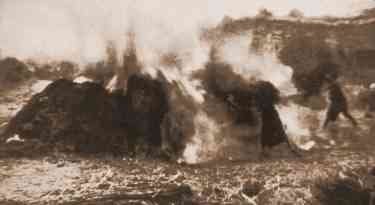
An open bonfire of the dry pots using brushwood and dried grass.

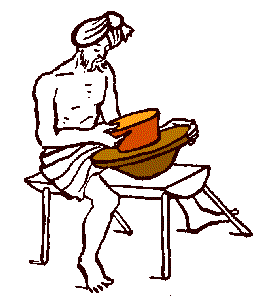
A potter using one of the many version of a bowl or platter for easier coiling.

The Wheel was invented in the 4th Millennium BC in Sumer S. Iraq.
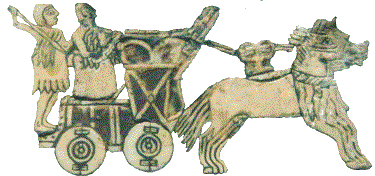
Detail of the wooden wheeled chariot shown on the Standard of Ur panel. I have removed the background blue lapis to emphasise the chariot's design)

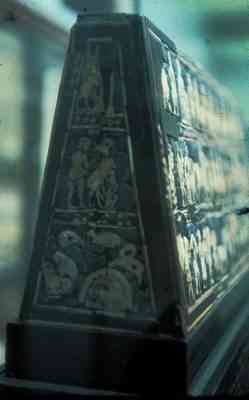
Wedge shaped box decorated with tiny piece of lapis,ivory and limestone. One decorated panel illustrates a four wheeled cart or chariot. This box which may be the sounding board for a harp, was found in a royal grave at Ur in Iraq. c.3000 BC.

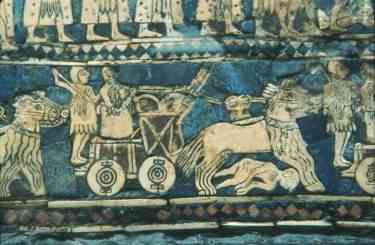
A detail from one of the rectangular panels showing the warriors in this horse drawn chariot. The drawing clearly shows the construction of the wooden wheels.

Ancient Egyptian pottery techniques as shown in tomb paintings c. 2000BC.
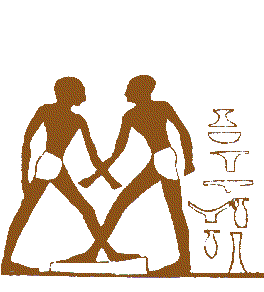
Treading (preparing) clay.

Ancient Egyptian pottery techniques as shown in tomb paintings c. 2000BC.
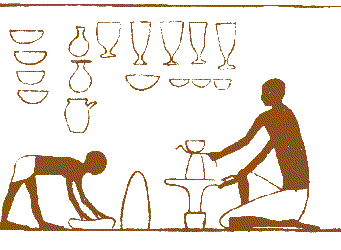
The man on the left appears to be wedging the piece of clay. The potter on the right cuts off a bowl from a hump of clay, using a string, whilst pulling round the turntable.

Ancient Egyptian pottery techniques as shown in tomb paintings c. 2000BC.
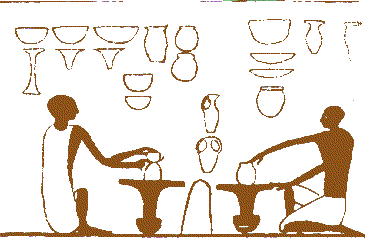
Making pots on turntables.
Notice the range of pots portrayed above.

Ancient Egyptian pottery techniques as shown in tomb paintings c. 2000BC.
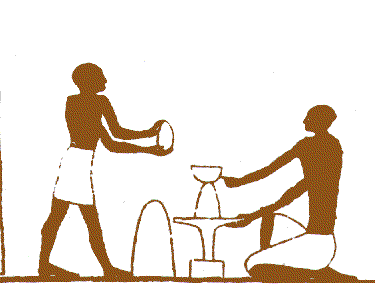
Assistant holding a finished bowl.

Ancient Egyptian pottery techniques as shown in tomb paintings c. 2000BC.
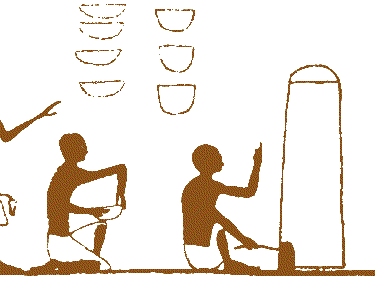
Lighting the tall kiln.

Ancient Egyptian pottery techniques as shown in tomb paintings c. 2000BC.
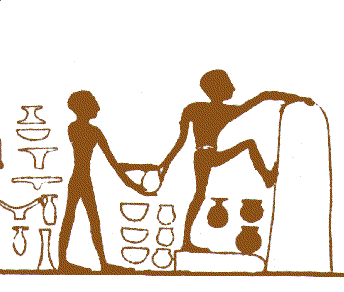
Emptying the kiln.

Ancient Egyptian pottery techniques as shown in tomb paintings c. 2000BC.
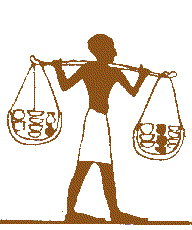
Carrying away fired pots.

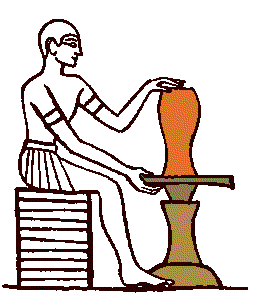
A reconstruction of an ancient Egyptian potter
using one of a number of types of turntables illustrated in tomb paintings. He smoothes the top of the pot with one hand whilst pulling round the turntable with the other hand.

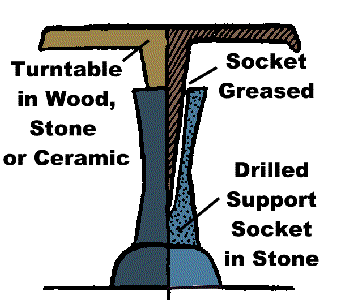
Diagram illustrating the probable structure of the previous turntable.

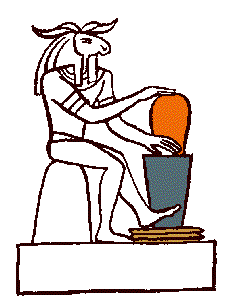
An Egyptian God using a potters turntable. This version is turned by kicking with the foot, leaving both hands free to work on the pot. It appears to be a more free-running turntable.

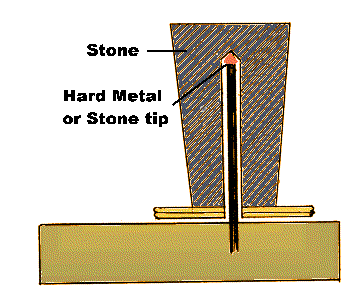
This diagram illustrates the probable construction of the turntable shown in the last illustration.

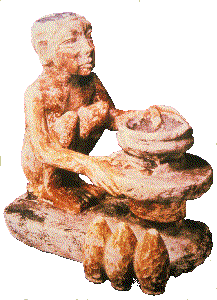
A small limestone model of an Egyptian potter making a bowl using a turntable with heavy wheelhead which was probably made of stone. It had a central socket pivoting on a hard stone point. Its weight and the low friction bearing would produce force and speed; another step towards the modern potters wheel.

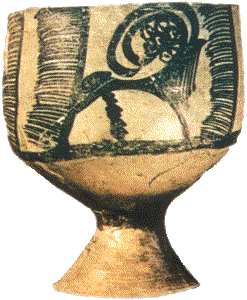
A slip decorated goblet from Tepe Hissar in Iran c.3000BC. In this early example of Iranian pottery decoration the stylistic characteristics were already established. But the new development shown here is that the bowl has a stem. Each part was made separately on a turntable and then stuck together. The pottery goblet (or stem bowl) begins to appear in Western Asia as the turntable or pottery wheel came into use.

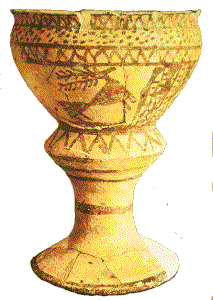
A more elaborately shaped stem bowl from Dier Alla in Jordan c. 1500BC. The bowl and stem would have been shaped separately on a wheel and then joined together.

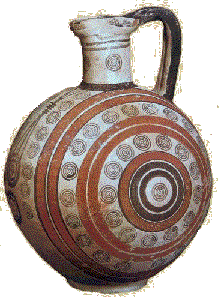
Made some centuries later - in the 7th century BC in Cyprus. By now potters wheels had improved in speed and momentum. This pottery flask is a composite 3-4 part vessel. A thrown stem, two thrown shallow bowls and a pulled handle. The leather hard bowls were luted together with slip and the stem cut and fixed to the bowls. A base ring was probably added and the handle became the final addition. The wheel was also needed to produce the crisp geometric circular patterns of slip trailing and brushwork.

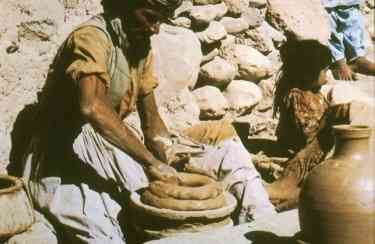
A fired clay dish has been stuck to the wheel head with clay. We can see two thick coils of clay ready to be squeezed and smoothed together to form the beginning of another large pot. This 20th century Afghan potter is making large storage pots by fast coiling on a wheel. He turns this around with his foot.

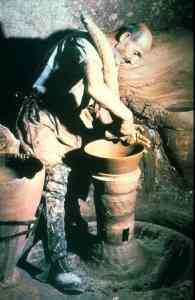
A potter in Turkey lowers an enormous coil of soft clay onto the partly build up wall of bowl. He uses his foot to turn the wheel as he smoothes and squeezes the coils. This method of fast coiling is a most suitable technique for making large pots.

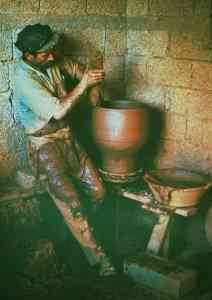
This late 20th century potter works in a Cretan village. His wheel is essentially the same as the ones used by the Turkish and Afghan potter. He too is fast coiling a storage jar, and uses a large soft clay coil to add to the partially built pot wall. The half finished pot has been allowed to stiffen up a bit in the sun.

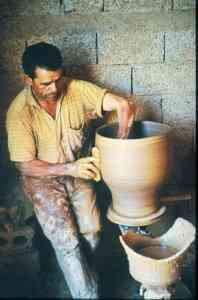
After adding a large clay coil, this Cretan potter is now thinning and smoothing the wall, using a piece of sheep bone rib. The pot will now be put out in the sun for a while to stiffen a little before another coil is added.

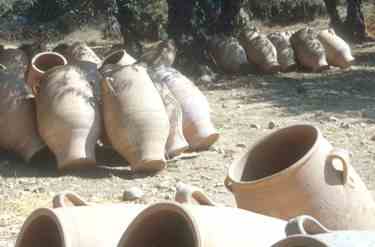
Fired storage jars made by the Cretan potters shown in the previous photos.

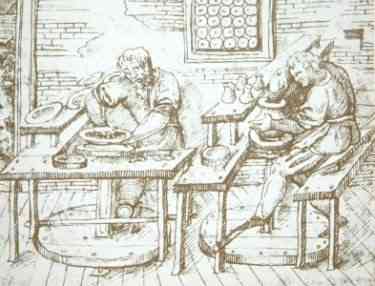
This drawing shows 16th century Italian potters at work. They sit at bench high wheels made mostly out of wood. There is no tray so the potters wear aprons to avoid being covered with slurry. One foot is resting on a bar, whilst the other is used to kick the heavy flywheel around.

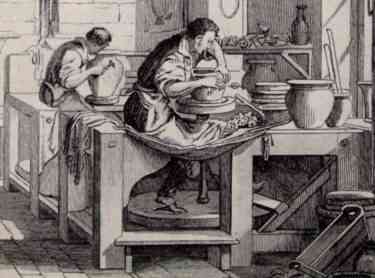
This shows 19th century French potters using the (momentum)potters wheel for throwing, finishing and decorating. The structure appears very solid. Brass and iron is now used for shafts and bearings. The flywheel would have been extremely heavy, often weighted with lead.

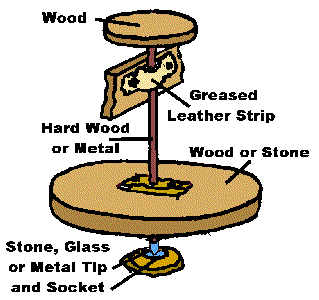
This diagram indicates the probable materials and structure of the 16th century wheels.

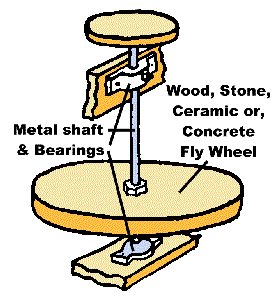
This diagram indicates the materials and structure of more efficient later momentum wheels.

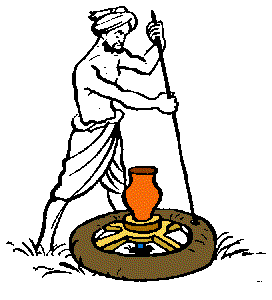
A momentum wheel used in India.

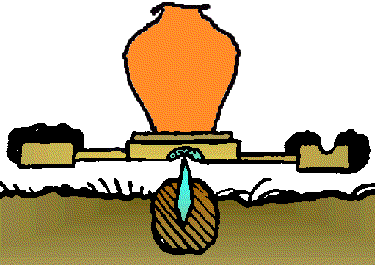
Diagram showing the way the Indian wheel is pivoted, weighted with added clay around the outside rim and carefully balanced. A long pole is used to get the wheel up to a fast speed.

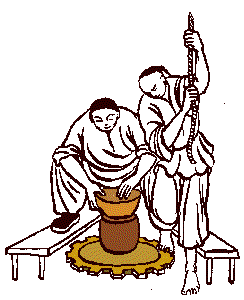
One variation of the momentum wheel in China. An assistant provides the kicking power.

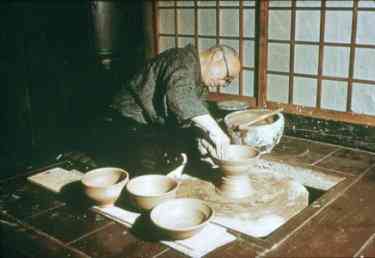
A typical Japanese momentum wheel at ground level. The potter sits cross-legged and uses a stick to get the heavy flywheel, which is also the turntable, up to a sufficient speed for throwing.

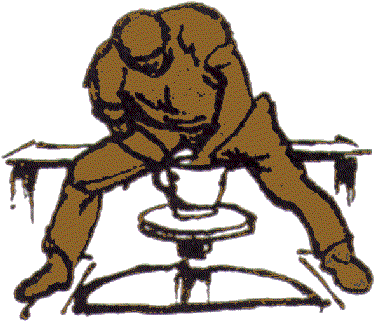
This is the last illustration.
I hope you have found tutorial No.2 interesting and perhaps useful.
Tutorial No.3 covers early firing techniques from bonfires to the earliest kilns.

That was the last illustration in this tutorial

Last modified on 29th July 2000
©2000 Victor Bryant
To Index Home Page